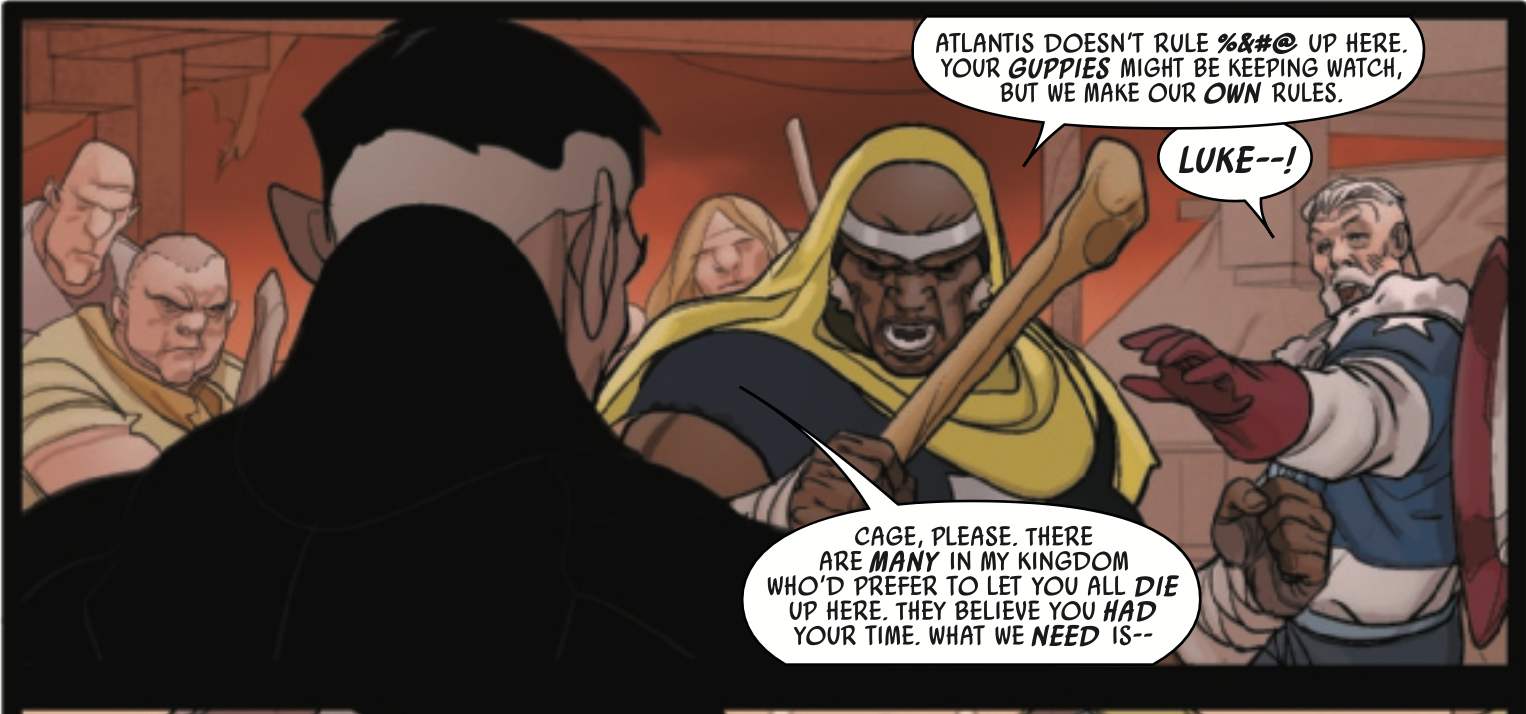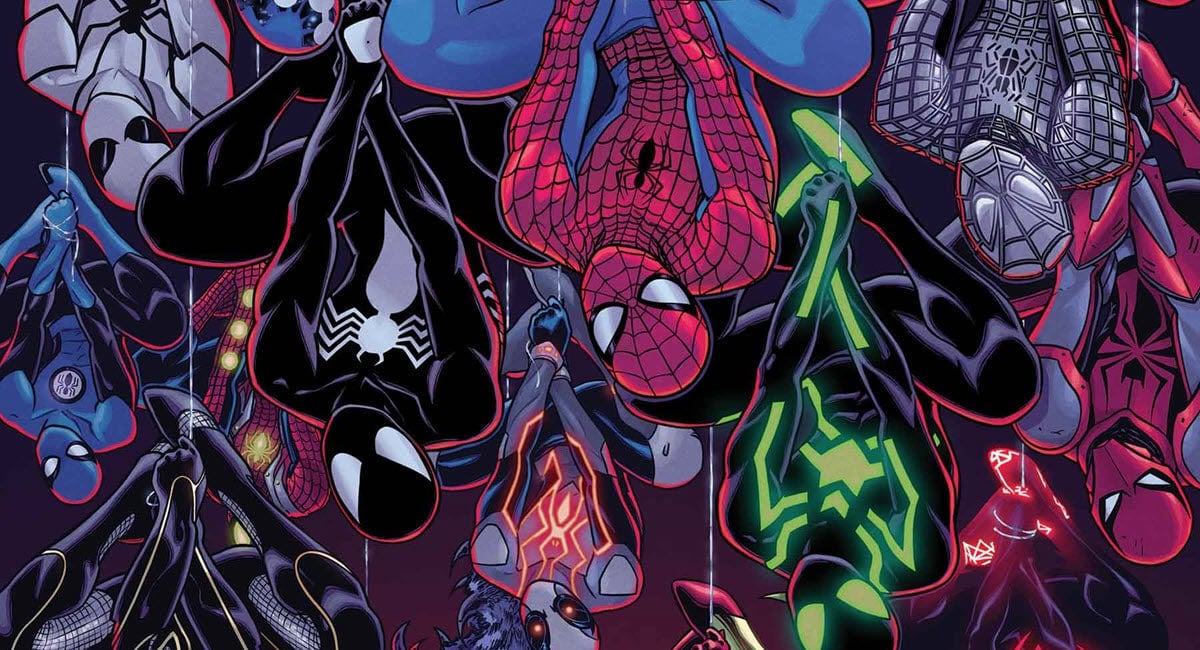In a world submerged, Namor yet lives! Namor: Conquered Shores #1 headlines the Marvel Rundown this week. If you haven’t read it yet, tread water carefully, for there be spoilers here… not to mention a fair amount of aquatic puns.
What did you think of this week’s fresh Marvel Comics catch? The Beat is waiting to hear from you! We’ll be anxiously awaiting your thoughts, either here in the comment section, over on social media @comicsbeat, or by international maritime signal flag!
 Namor The Sub-Mariner: Conquered Shores #1
Namor The Sub-Mariner: Conquered Shores #1
Writer: Christopher Cantwell
Artist: Pasqual Ferry
Color Artist: Matt Hollingsworth
Letter: Joe Caramagna
In Namor: Conquered Shores, the world has moved on… but Namor is still here.
Set on a future Earth where the waters have risen and taken back the land, the Sub-Mariner has abdicated the throne and now spends a not-inconsiderable amount of his time brooding on what was. But while this concept could have been little more than a Namor remix of Old Man Logan, the science fiction-y setting and artful interweaving of Timely continuity elevates this intriguing opening for a miniseries.
Waterworld
The issue opens on an arresting one-page splash of the Statue of Liberty’s torch at sunset, the only visible landmark over the surface of the sea. This sets the tone for the issue: reflective and meditative, but ever drawing the mind to what lies beneath. In narrative boxes, Namor comments on the fact that the time he spent with land-dwellers – the portion of his stories with which we readers are acquainted – now constitutes only a “sliver” of his full life span.
“It turns out, all I had to do was wait,” Namor narrates. While the state of the Earth may have been hastened by Kree technology, humans were going to burn out the planet sooner or later, anyway.
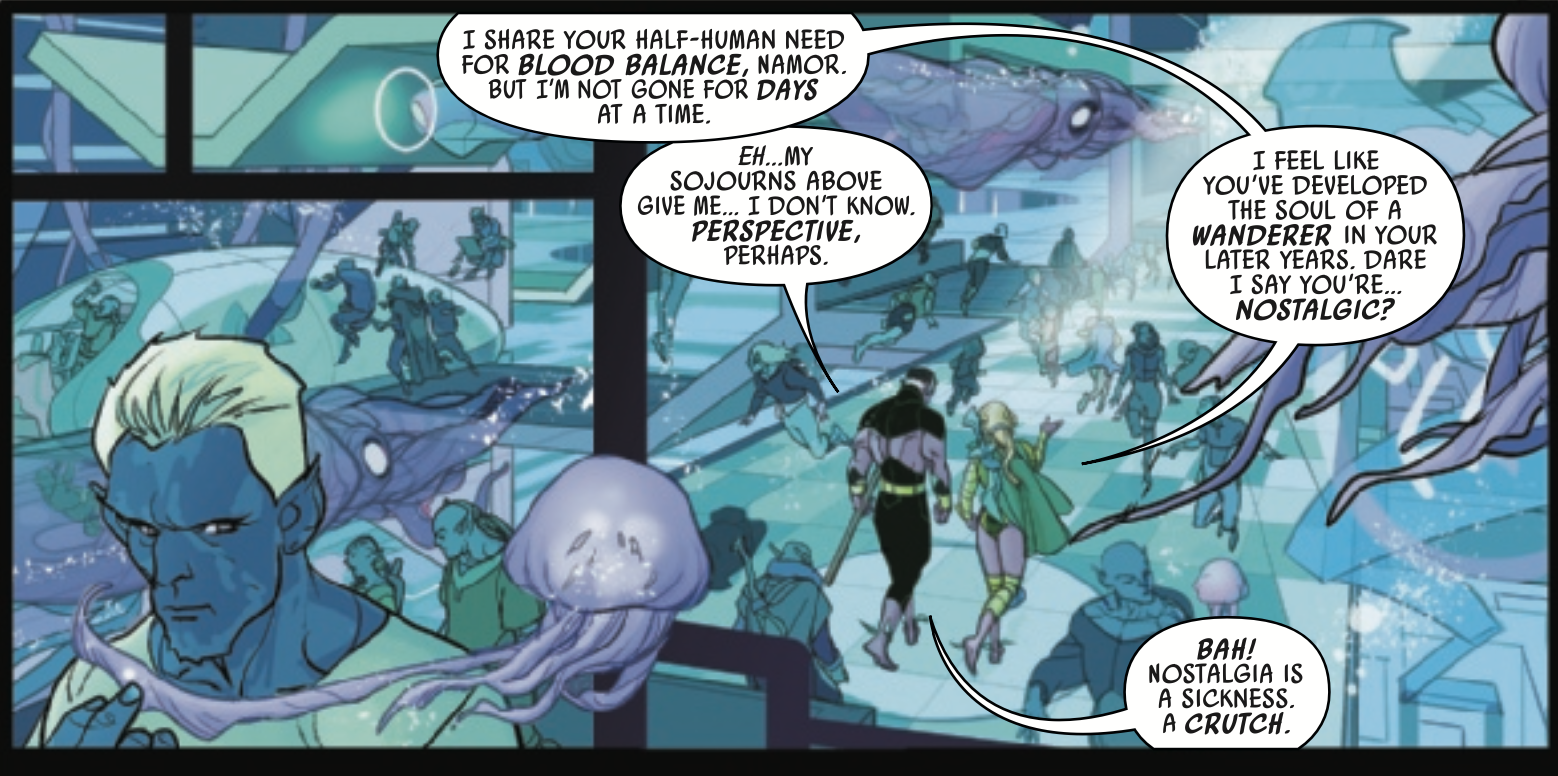
Against this sci-fi style backdrop, the one-time ruler of Atlantis thinks about the days when life on dry land was still plentiful. At least in this issue, there is no attempt to resolve the “core issues” or restore the planet, which I appreciated.
The world has moved on, and Namor’s concerns lie elsewhere… and within.
Artifacts of the world that was
On the letters page, Cantwell provides an afterword that gives insight into the ideas that underscore Conquered Shores. Citing the “Ray Bradbury/Weird Tales” vibe of Jim Hammond’s origin story in Marvels by Kurt Busiek and Alex Ross, he explains how he followed the Torch’s trail deep into submerged Timely Comics continuity. Describing both the Sub-Mariner and the original Human Torch as pre-Marvel Comics “artifacts,” often left out of the broadly accepted continuity, Cantwell states an intention to use the title to dredge this continuity in order to examine the ensuing salvage.
Just how this will play out mostly remains to be seen: this is only the first issue of Conquered Shores, after all, and the Human Torch only appears in the final panels of this chapter of the story. But nevertheless, it belays considerably more potential than a reductive post-apocalypic story based primarly on showcasing “rugged” versions of familiar characters.
Which isn’t to say we don’t get to see some familiar (if weathered) faces besides Namor and the original Torch. Captain America is still doing what Steve Rogers does best, even if the country that serves as his namesake literally sleeps with the fishes, and a time-tested Luke Cage proves to have grown into his distinctive crown, making him an especially worthy adversary for the Sub-Mariner.
However, the recognizable cast feels less like an Easter egg hunt and more like key figures in this meditative, moody tale.
Conquered Shores
It must be said that throughout this issue, Ferry and Hollingsworth work in harmony to provide page after page of superb art. In 2021’s Spider-Man: Spider’s Shadow, the duo brought readers to the retro world of Peter Parker’s past. In Conquered Shores, they take us in the other temporal direction. In both cases, their efforts transport the reader to an uncanny version of the Marvel Comics universe; familiar, but still somehow fresh and strange.
And of course, Caramagna’s lettering is as reliable as ever.
Taken all together, this all constitutes a team full of exceptionally talented creators, each of them operating at high capacity and delivering a story that takes full advantage of the narrative potential of superhero continuity and storytelling.
Verdict: BUY.
Rapid Rundown
- Wakanda #1
-
Wakanda #1 begins with “Shuri” by Stephanie Williams (Nubia: Queen of the Amazons), Paco Medina, Walden Wong, Elisabetta D’Amico, Bryan Valenza, and Joe Sabino. The story spins out of John Ridley‘s Black Panther run, so if you are a behind (and care about spoilers), read this issue after you’ve finished that. But you don’t need to read that run before reading the issue; I followed along fine. With T’Challa on the run and the future of Wakanda in peril, an old foe sneaks into Wakanda. As Shuri goes up against her first challenge, she learns a lesson about leadership from Queen-Mother Ramonda (it’s Marvel, of course, there is a last page reveal). In one panel, Shuri alludes to the weight of appearing in a Black Panther story following the loss of Chadwick Boseman, saying to her mom, “This isn’t the first time we’ve been without T’Challa, but something about it feels different, and for the life of me, I cannot pinpoint why.” Wong and D’Amico bring a dynamic cross-hatching technique that draws in the eye. Medina’s poses for Shuri are sometimes like a cover of the 1990s Barbie comics, and the colors by Valenza are bright and enjoyable. The second story is “History of the Black Panthers,” Part 1, by Evan Narcisse, Natacha Bustos, Jordie Bellaire, and Sabino tells the story of Mosi, a character last seen in Avengers: 1,000,000 B.C. #1.
-
Next week: Crypt of Shadows #1, Deadly Neighborhood Spider-Man #1, and MORE!


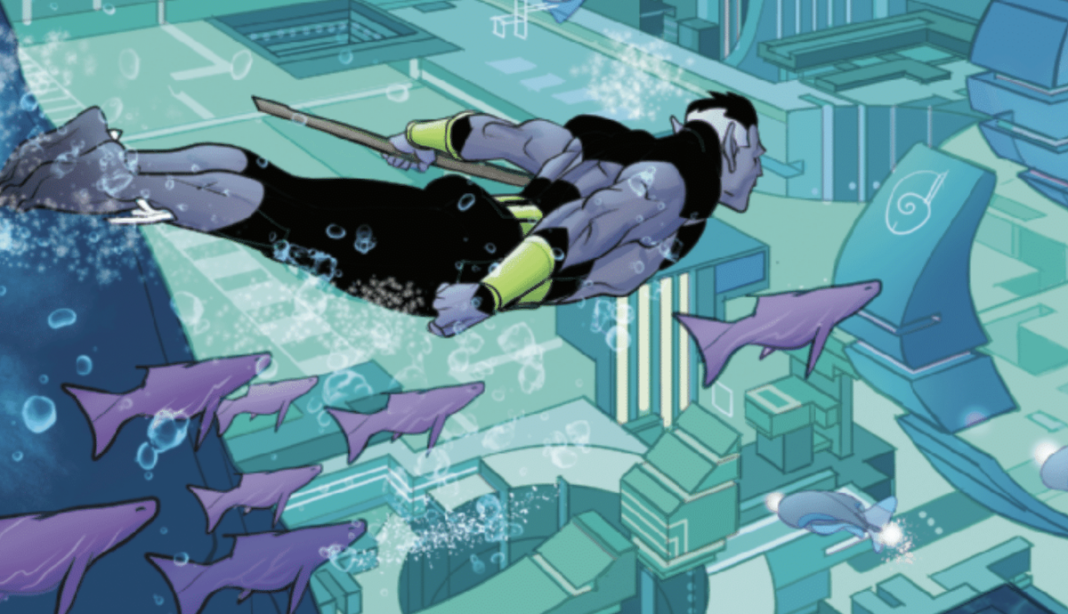
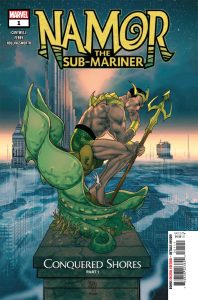 Namor The Sub-Mariner: Conquered Shores #1
Namor The Sub-Mariner: Conquered Shores #1